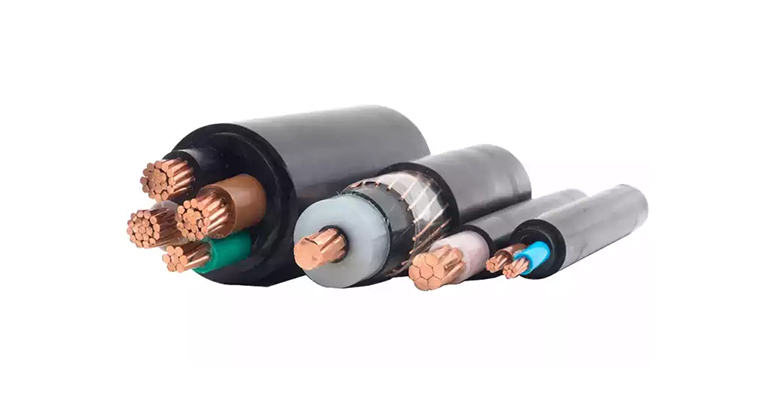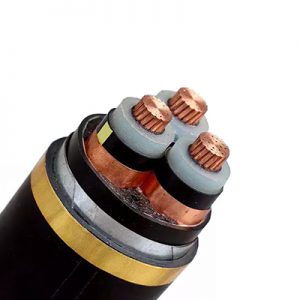- Offices Time:24 Hours Online
- Email:[email protected]
- WhatsApp:+8618339938759

Posted on January 9, 2023
The difference and maintenance of low-voltage cables and high-voltage cables
Cables are used to transmit power, but the cables sold on the market are also divided into high-voltage cables and low-voltage cables. There are many differences between these two cables, and their application ranges are not the same. High-voltage cables are power cables An important member of the cable, he is used to transmit power between 1kv and 100kv, while low-voltage cables are cables used to transmit power below 1kv. This is the most important difference between the two.
According to the difference between working at different voltages, cables can be roughly divided into 5 categories:
Weak voltage cables (below 450/750V) low voltage cables (0.6/1KV) medium voltage cables (3-35KV) high voltage cables (35-110KV) extra high voltage cables (110KV-750KV)
The difference between low-voltage cables and high-voltage cables:
1.Low-voltage cables: Low-voltage cables are generally produced by polyvinyl chloride, and also by cross-linked polyethylene. Therefore, low-voltage cables are divided into two types: cross-linked and ordinary, while other power cables do not have this distinction. They are all cross-linked cables. The purpose of low-voltage cables is to connect low-voltage power supplies and equipment, including control cables, communication cables, and signal cables. They are all low-voltage cables.

2.Because of the large transmission capacity, high-voltage cables are widely used, including electric power, construction, industrial and mining, transportation and other fields. Ultra-high-voltage cables are a kind of cable that has emerged due to the gradual increase in human activities and the requirements for long-distance transmission. Power cable, which represents the latest high-tech transmission technology of mankind.
How to distinguish high voltage and low voltage cables:
1.View the section. The innermost layer of the cable is a conductive core, a copper core or an aluminum core, followed by an insulating layer, a semi-conductive layer, a shielding layer, a filling layer, a steel armor protective layer, and a rubber protective layer.
2.Check the insulation thickness.
3.Low-voltage (less than 1KV) 1~3mm thick, 10KV cable 5~8mm, 35KV cable 10mm or so, low-voltage or weak current cables generally have a layer of insulation and protection.

4.The high-voltage cable has an insulating layer after removing the sheath, that is, the main insulating layer is wrapped outside the cable core, and the low-voltage cable has no main insulating layer, only a rubber protective layer.
5.Check the brand name. The outermost layer of the cable will print the relevant parameters of the cable, including length, rated voltage, cable type, cross-sectional area, etc. This is the most intuitive and accurate identification method.
The role of cables is indispensable today. Whether it is the seabed, mountains, or basins, all human activities, industrial production, and transportation economy seem to have cables. Human demand for electricity, a clean energy, will be in the future. As reserves become rarer and rarer, the role of cables will also become more and more important as a transmitter between electrical equipment and power supply equipment.
Of course, such an important cable will also have problems. In order not to affect the daily production and operation, the cable needs to be inspected and maintained regularly.
What are the common cable maintenance items?
1.Load detection
The load detection of the cable is to prevent the line voltage from exceeding the rated voltage of the cable, because the long-term load is very harmful to the cable and will accelerate the aging of the cable insulation.
2.Temperature detection
If the cable fails, it will generally be accompanied by a temperature rise, so it is also necessary to detect the temperature of the cable.
3.Corrosion detection
Corrosion is divided into two types, one is electrolytic corrosion and the other is chemical corrosion. Since many cables are buried underground, they are easily corroded by acid and alkali substances in the soil, so regular corrosion testing is required.
In addition to the above three types of conventional inspections, factors such as fire prevention, external damage, and animal bites should also be considered, and hidden dangers should be eliminated regularly.
Post categories
Most Popular Posts
-
The 136th Canton Fair welcomes you to participate!
October 12, 2024 -
High temperature cable introduction
July 26, 2024 -
Kenya Power and Energy Exhibition 2024
June 11, 2024 -
Introduction of rubber sheathed cable
June 5, 2024





